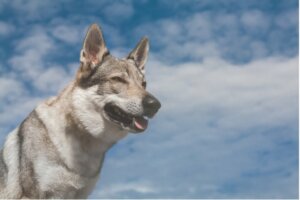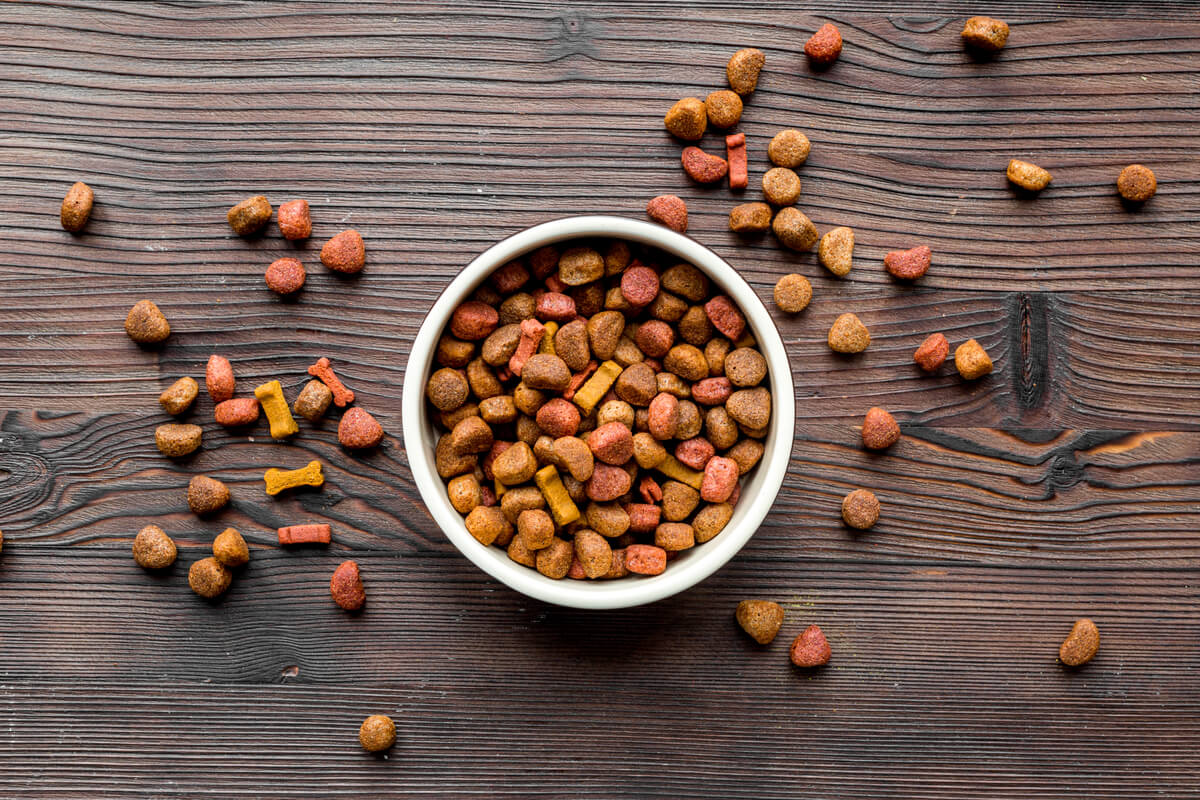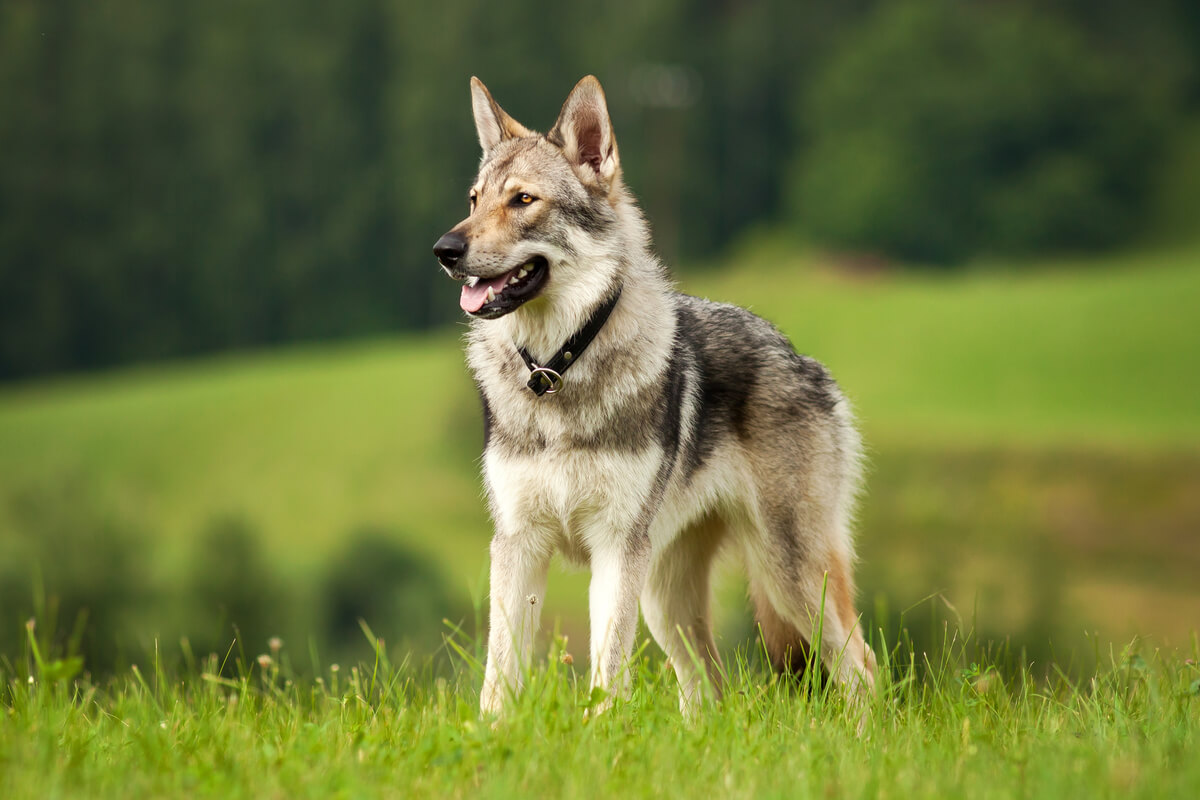What to Feed the Czechoslovakian Wolfdog


Written and verified by the biologist Cesar Paul Gonzalez Gonzalez
The Czechoslovakian wolfdog is a breed that comes from a cross between a German Shepherd and a wolf. The results are a dog with great mentality and obedience, but with the strength and endurance of its wild relative. Although it has an imposing and grandiose appearance, it needs certain attention to stay healthy.
Keeping a dog of this kind isn’t easy, as its wild characteristics may cause it to need more care than other dogs. Among the most relevant points to keep the Czechoslovakian wolfdog in good health is its feeding. Keep reading to find out the best diet for this dog.
What’s better: dog food or homemade food?
Dry or wet dog food is one of the best choices for most dog breeds, since it contains most of the nutrients they’ll need in their diet. In general, this type of food is enough for the pet to live well and stay healthy – as long as low-quality products are avoided.
It’s normal to assume that homemade food offers better nutrients than processed food. However, in practice, this isn’t so easy, as you have to formulate a diet that meets all of your dog’s nutritional requirements. This is quite difficult because several animal proteins need to be included and cooked together at the same time. In addition, any nutrient deficiency can lead to problems for the dog.
As you can see, the best option is usually to offer feed-type food to the pet. This doesn’t cause nutritional problems and avoids serious complications. However, this doesn’t mean that you can’t occasionally offer homemade food. The only thing you should keep in mind is to avoid mixing both options at the same time.

Biologically Appropriate Raw Food (BARF)
For years, there has been an interest in improving the quality of dog food, because, in some cases, the nutrients in processed dog food aren’t of sufficient quality. As a result, alternative diets have been created based on the adaptive carnivorous nature of the species.
These new options are known as biologically appropriate raw food diets (BARF). Such a diet consists of providing raw meals based on good quality animal protein. Thanks to this, it’s possible to obtain adequate nutrients, in addition to preserving antioxidants essential for the functioning of the canine metabolism.
The main objective of consuming raw food is to avoid colorings, flavorings, and preservatives. Another is to keep as many nutrients in the food as possible, since commercial feeds lose them when they undergo industrial processes such as extrusion. In fact, some studies indicate that these minimal changes could improve your dog’s overall health.
Before you decide to give your pet this type of diet, take into account that you need to regulate precisely how many nutrients you provide and what impact the changes will have on their health. Of course, it isn’t possible to do this without professional help, and it isn’t advisable to use it unless you have the proper advice.
What should you feed your Czechoslovakian wolfdog?
The best recommendation we can give to owners of this breed of dog is to use a normal dog food-based diet, but to occasionally offer them homemade food. This way you get the best of both diets, while also varying the type of food the Czechoslovakian wolfhound is fed.
Remember that not just any food will satisfy your dog’s requirements – you should look for the best quality. An “easy” way to select good brands of food is to analyze the ingredients listed on the label. The first element shown is the one that appears in greater quantity, and it’s best to try to purchase food that has a high content in animal proteins.
Some commercial brands reduce production costs by using flours, cereals, or pasta as the main ingredients. However, a dog’s metabolism isn’t able to process the nutrients contained in these elements well, and so they aren’t very suitable for them.
Rations and quantities
The feeding of a Czechoslovakian wolfdog isn’t very different from that of other dogs, and the rations are the same that you would use with other dogs of the same size. While it’s still a puppy, it should be fed between 2 and 3 servings a day for the first 2 to 4 months of age, while from 6 months onwards, this should be increased to 4 servings.
In the adult stage (at one and a half years of age), they should be fed 3 servings a day. However, keep in mind that these measures can be modified according to the canine’s energetic needs. If they do a lot of exercise, or have a very demanding life, they may require more food to supply the energy expenditure.
Although this dog may appear to be quite wild, its diet doesn’t vary much from that of other dogs.

It’s quite normal to think that the diet of the Czechoslovakian wolfdog is different from that of other breeds, as it comes from a cross with a wild animal. However, this isn’t entirely the case, and nutrition by means of commercial feed can supply a great part of its needs.
Remember that if you have any questions about how best to feed them, or you want to opt for alternative options, then you should go to see a professional for guidance.
The Czechoslovakian wolfdog is a breed that comes from a cross between a German Shepherd and a wolf. The results are a dog with great mentality and obedience, but with the strength and endurance of its wild relative. Although it has an imposing and grandiose appearance, it needs certain attention to stay healthy.
Keeping a dog of this kind isn’t easy, as its wild characteristics may cause it to need more care than other dogs. Among the most relevant points to keep the Czechoslovakian wolfdog in good health is its feeding. Keep reading to find out the best diet for this dog.
What’s better: dog food or homemade food?
Dry or wet dog food is one of the best choices for most dog breeds, since it contains most of the nutrients they’ll need in their diet. In general, this type of food is enough for the pet to live well and stay healthy – as long as low-quality products are avoided.
It’s normal to assume that homemade food offers better nutrients than processed food. However, in practice, this isn’t so easy, as you have to formulate a diet that meets all of your dog’s nutritional requirements. This is quite difficult because several animal proteins need to be included and cooked together at the same time. In addition, any nutrient deficiency can lead to problems for the dog.
As you can see, the best option is usually to offer feed-type food to the pet. This doesn’t cause nutritional problems and avoids serious complications. However, this doesn’t mean that you can’t occasionally offer homemade food. The only thing you should keep in mind is to avoid mixing both options at the same time.

Biologically Appropriate Raw Food (BARF)
For years, there has been an interest in improving the quality of dog food, because, in some cases, the nutrients in processed dog food aren’t of sufficient quality. As a result, alternative diets have been created based on the adaptive carnivorous nature of the species.
These new options are known as biologically appropriate raw food diets (BARF). Such a diet consists of providing raw meals based on good quality animal protein. Thanks to this, it’s possible to obtain adequate nutrients, in addition to preserving antioxidants essential for the functioning of the canine metabolism.
The main objective of consuming raw food is to avoid colorings, flavorings, and preservatives. Another is to keep as many nutrients in the food as possible, since commercial feeds lose them when they undergo industrial processes such as extrusion. In fact, some studies indicate that these minimal changes could improve your dog’s overall health.
Before you decide to give your pet this type of diet, take into account that you need to regulate precisely how many nutrients you provide and what impact the changes will have on their health. Of course, it isn’t possible to do this without professional help, and it isn’t advisable to use it unless you have the proper advice.
What should you feed your Czechoslovakian wolfdog?
The best recommendation we can give to owners of this breed of dog is to use a normal dog food-based diet, but to occasionally offer them homemade food. This way you get the best of both diets, while also varying the type of food the Czechoslovakian wolfhound is fed.
Remember that not just any food will satisfy your dog’s requirements – you should look for the best quality. An “easy” way to select good brands of food is to analyze the ingredients listed on the label. The first element shown is the one that appears in greater quantity, and it’s best to try to purchase food that has a high content in animal proteins.
Some commercial brands reduce production costs by using flours, cereals, or pasta as the main ingredients. However, a dog’s metabolism isn’t able to process the nutrients contained in these elements well, and so they aren’t very suitable for them.
Rations and quantities
The feeding of a Czechoslovakian wolfdog isn’t very different from that of other dogs, and the rations are the same that you would use with other dogs of the same size. While it’s still a puppy, it should be fed between 2 and 3 servings a day for the first 2 to 4 months of age, while from 6 months onwards, this should be increased to 4 servings.
In the adult stage (at one and a half years of age), they should be fed 3 servings a day. However, keep in mind that these measures can be modified according to the canine’s energetic needs. If they do a lot of exercise, or have a very demanding life, they may require more food to supply the energy expenditure.
Although this dog may appear to be quite wild, its diet doesn’t vary much from that of other dogs.

It’s quite normal to think that the diet of the Czechoslovakian wolfdog is different from that of other breeds, as it comes from a cross with a wild animal. However, this isn’t entirely the case, and nutrition by means of commercial feed can supply a great part of its needs.
Remember that if you have any questions about how best to feed them, or you want to opt for alternative options, then you should go to see a professional for guidance.
All cited sources were thoroughly reviewed by our team to ensure their quality, reliability, currency, and validity. The bibliography of this article was considered reliable and of academic or scientific accuracy.
- Schmidt, M., Unterer, S., Suchodolski, J. S., Honneffer, J. B., Guard, B. C., Lidbury, J. A., … & Kölle, P. (2018). The fecal microbiome and metabolome differs between dogs fed Bones and Raw Food (BARF) diets and dogs fed commercial diets. PLoS One, 13(8), e0201279.
- Hielm-Bjorkman, A., & Virtanen, J. (2019). Exploratory study: 632 shared experiences from dog owners changing their dogs’ food to a raw food (BARF) diet.
- ARIAS, M. L., LÓPEZ, L. L., & LÓPEZ, Á. M. (2018) DISEÑO DE DIETAS BARF PARA PERROS EN TRES ETAPAS FISIOLÓGICAS (Tesis de grado, Universidad Tecnológica de Pereira).
- Morelli, G., Bastianello, S., Catellani, P., & Ricci, R. (2019). Raw meat-based diets for dogs: survey of owners’ motivations, attitudes and practices. BMC veterinary research, 15(1), 1-10.
This text is provided for informational purposes only and does not replace consultation with a professional. If in doubt, consult your specialist.








